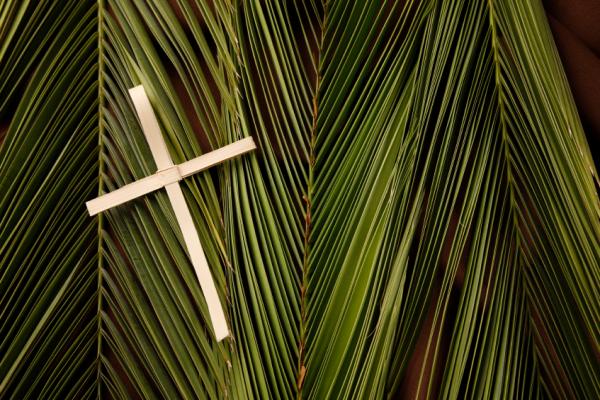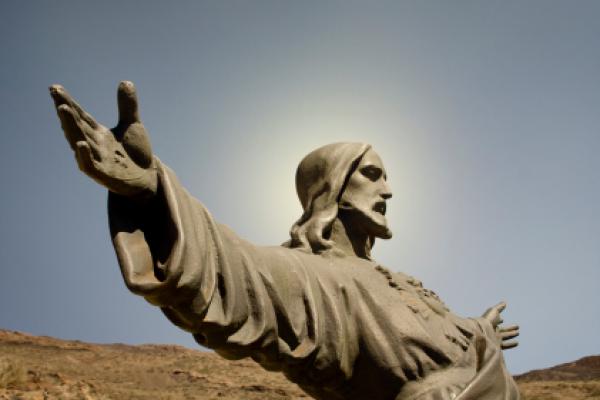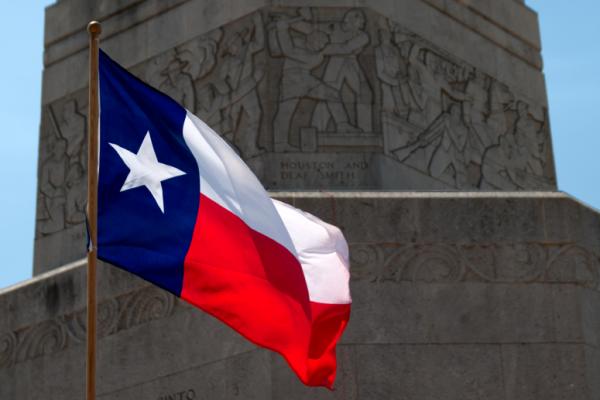St Patrick’s Day occurs on March 17 and is day to remember one of Ireland’s patron saints, St Patrick. It largely celebrates Irish-American culture in the United States, and the use of the color green is predominant.
 Irish related stories, such as one about the Leprechaun’s pot of gold, are often told on St Patrick’s Day.
Irish related stories, such as one about the Leprechaun’s pot of gold, are often told on St Patrick’s Day.
©iStockphoto.com/SharapaAndriy
What do people do?
St Patrick’s Day celebrations concentrate on Irish themed parties, alcoholic drinks and food. People celebrating often dress in green clothing and may consume food and drink dyed green. Irish clubs and pubs often hold special events or promotions. Large street parades are held to mark St Patrick’s Day in cities such as:
- Chicago.
- Boston.
- Houston.
- Philadelphia.
- Pittsburgh.
- Denver.
- Detroit.
- Toronto.
- New York.
- New Orleans.
- Seattle.
Parades are held on Saturday, March 16, in New York during the years when March 17 is a Sunday. The parade is always held on the Sunday before March 17 in many other cities. Some people see St Patrick’s Day as a celebration of the color green, rather than solely focusing on the Irish-American culture. Water is dyed green in public places in some towns. The most notable body of water that was dyed green was the Chicago River in 2005.
People dress in green clothing and eat food, which is either naturally or dyed green, on St Patrick’s Day. Some people go as far as holding green dinner parties where the guests are expected to wear green and eat exclusively green food.
Public life
St Patrick’s Day is not a federal holiday in the United States. Schools, businesses and organizations are open as usual. Public transport systems run on their regular schedules. There may be some local disruption to traffic due to St Patrick’s Day parades. This is particularly true in cities with a large Irish-American population, including New York, New Orleans and Seattle. The parades may be on or around March 17, so it is a good idea to check local sources for the exact location, date and time.
Background
St Patrick is one of Ireland’s patron saints and many Americans with Irish ancestry remember him on March 17. Patrick’s Day is fixed on March 17, but may occasionally be moved by the authorities of the Catholic Church. This happened in 1940, so that the celebrations would not fall on Palm Sunday, and in 2008 to avoid Holy Monday, the last Monday before Easter Sunday.
Symbols
The most common St Patrick’s Day symbol is the shamrock. The shamrock is the leaf of the clover plant and a symbol of the Holy Trinity. Other symbols include:
- Almost anything colored green.
- The green, orange and white flag of the Republic of Ireland.
- Brands of beer associated with Irish culture.
Religious symbols include snakes and serpents. Other Irish-related symbols seen on St Patrick’s Day include the harp, which was used in Ireland for centuries, as well as a mythological creature known as the leprechaun and a pot of gold that the leprechaun hides.
About St. Patrick’s Day in other countries
Read more about St. Patrick’s Day.
Courtesy of DateandTime.com
Many Christians in the United States remember Jesus’ triumphal entry into Jerusalem on Palm Sunday, which marks the beginning of Holy Week. This day is also on the Sunday before Easter Sunday.
 The palm and the cross are Christian symbols that are seen in churches at a Palm Sunday service or mass.
The palm and the cross are Christian symbols that are seen in churches at a Palm Sunday service or mass.
©iStockphoto.com/duckycards
What do people do?
Programs of sacred music are performed in many towns and cities in the United States on Palm Sunday. They are often sponsored by and held in local churches but they may also be part of the musical community’s regular concert series. These programs usually begin on or before Palm Sunday and may continue throughout Holy Week. Bethany College’s Messiah Festival in Lindsborg, Kansas, has been held during Holy Week for more than 100 years.
Plays or pageants that focus on Holy Week themes are also performed on Palm Sunday. The Blessing of the Fleet in St Augustine, Florida, takes place on Palm Sunday each year. Shrimp trawlers and other fishing boats, as well as privately owned vessels, visit the town to receive a blessing. It is also customary for Christians to place blessed palm leaves in the shape of a cross behind religious images or statues in homes, stores and restaurants in the United States.
Public life
Palm Sunday is not a federal holiday in the United States. However, it is held on a Sunday, which is a non-school day and non-working day for many Americans.
Background and Symbols
Palm Sunday is observed among many Christian churches as part of Holy Week in the United States. The term Pascua Florida, which in Spain originally referred to Palm Sunday, was later applied to the festive season of Easter Week. The state of Florida received its name when Ponce de Leon first sighted the land and named it in 1513 most likely because the date was around Easter.
Palm leaves symbolize victory and joy among many Christians in the United States. Some churches use silk plant leaves or substitute palm leaves with olive branches on Palm Sunday because palm leaves can be difficult to find in some areas in the United States.
About Palm Sunday in other countries
Read more about Palm Sunday.
Courtesy of DateandTime.com
Good Friday occurs two days before Easter Sunday in the United States. It is the day when Christians commemorate Jesus Christ’s crucifixion, which plays an important part in the Christian faith. It is not a federal holiday in the United States, although it is a state holiday in some states.
 Good Friday remembers the death of Jesus Christ.
Good Friday remembers the death of Jesus Christ.
©iStockphoto.com/kelly cline
What do people do?
Some Christians may attend special church services or prayer vigils. Good Friday is a day of mourning and quiet prayer for many Christians. The candles are often extinguished and statues, paintings and crosses may be draped in black, purple or gray cloth. Some Catholics treat Good Friday as a day of fasting, while others observe a partial fast involving the exclusion of meat.
Some homes keep a quiet atmosphere, with little or no outside activities and limited television, radio, and computer use, in observing Good Friday. Others choose to play music such as JS Bach’s St. Matthew’s Passion. Some people bake hot cross buns, a traditional Good Friday sweet.
Good Friday is another day at work for many Americans, as it is not a national holiday. Some people may choose to take a day off work and have a long “Spring Break” weekend. In some states, employees are given a day off on Good Friday.
Public life
Good Friday is not an official holiday in the United States. Regular services will continue according the schedule in some areas, including Toledo, Ohio, where the city’s refuse will be collected during its regular schedule. However, financial markets, as well as many businesses, public schools and universities/colleges are closed on Good Friday.
Good Friday is a state holiday in some states such as Hawaii, where city and state offices are closed and some forms of public transport (eg. buses) run on the state holiday schedule. In some areas, such as Perry County in Tennessee, Good Friday is a school holiday. Good Friday is a holiday designated by the governor as a day of fasting and prayer in Connecticut.
In accordance with state law, Indiana state employees are given a day off on Good Friday, a religious holiday. In 1999, in the case of Bridenbaugh v O’Bannon, an Indiana state employee sued the governor for giving state employees Good Friday as a day off. The US Seventh Circuit Court of Appeals ruled against the plaintiff, stating that the government could give state employees a paid day off when that day is a religious holiday, including Good Friday, but only so long as the state can provide a valid secular purpose that coincides with the obvious religious purpose of the holiday.
Background
Good Friday is the day when Christians commemorate the crucifixion and death of Jesus Christ. The Easter date depends on the ecclesiastical approximation of the March equinox.
This is an important event in Christianity, as it represents the sacrifices and suffering in Jesus’ life. The crucifixion was the culmination of a number of events in Holy Week, including: the triumphal return of Jesus to Jerusalem on Palm Sunday; the washing of the disciples’ feet by Jesus; and the Last Supper on Maundy Thursday. Some churches organize a prayer vigil on Good Friday for various causes, such as for cancer patients or for the American troops who have been sent to the middle-east.
Symbols
The crucifix, or cross, which represents the way Jesus died, is an important symbol seen on Good Friday. Some crosses bear a figure of Christ. Other symbols of Good Friday include black cloth used to cover the cross, paintings and statues in churches and some homes to signify mourning.
About Good Friday in other countries
Read more about Good Friday.
Courtesy of DateandTime.com
Many Christians celebrate Jesus Christ’s resurrection on Easter Sunday. The Easter date depends on the ecclesiastical approximation of the March equinox.
 Easter Sunday celebrates the Christian belief of Jesus Christ’s resurrection from the dead.
Easter Sunday celebrates the Christian belief of Jesus Christ’s resurrection from the dead.
©iStockphoto.com/ Marcus Lindström
What do people do?
Many churches hold special services on Easter Sunday, which celebrate the Jesus Christ’s resurrection after his crucifixion. Many people also decorate eggs. These can be hard boiled eggs that can be eaten later, but may also be model eggs made of plastic, chocolate, candy or other materials. It is also common to organize Easter egg hunts. Eggs of some form are hidden, supposedly by a rabbit or hare. People, especially children, then search for them. In some areas, Easter egg hunts are a popular way for local businesses to promote themselves or may even be organized by churches.
Public life
Easter Sunday is not a federal holiday but a number of stores are closed in many parts of the US and if they are open, they may have limited trading hours. In some cities, public transit systems usually run their regular Sunday schedule, but it is best to check with the local transport authorities if any changes will be implemented during Easter Sunday.
Background
In Pagan times, many groups of people organized spring festivals. Many of these celebrated the re-birth of nature, the return the land to fertility and the birth of many young animals. These are the origins of the Easter eggs that we still hunt for and eat.
In Christian times, the spring began to be associated with Jesus Christ’s crucifixion and resurrection. The crucifixion is remembered on Good Friday and the resurrection is remembered on Easter Sunday. The idea of the resurrection joined with the ideas of re-birth in Pagan beliefs.
Symbols
For people with strong Christian beliefs, the cross that Jesus was crucified on and his resurrection are important symbols of the period around Easter. Other symbols of Easter include real eggs or eggs manufactured from a range of materials, nests, lambs and rabbits or hares. Sometimes these symbols are combined, for example, in candy models of rabbits with nests full of eggs. Eggs, rabbits, hares and young animals are thought to represent the re-birth and return to fertility of nature in the spring.
About Easter Sunday in other countries
Read more about Easter Sunday.
Courtesy of DateandTime.com
Many United States residents mark Tax Day as the deadline to file their income tax details to the Internal Revenue Service (IRS). The date is usually on or around April 15. However, this deadline may be extended to accommodate holidays or extreme weather conditions.
 Tax Day is an important date to remember.
Tax Day is an important date to remember.
©iStockphoto.com/joel-t
What do people do?
A large proportion of residents of the USA have to inform the IRS of all income that they received in the previous fiscal year. Some groups, particularly veterans, pensioners and some low-income families, do not have to file a tax return unless they wish to qualify for certain types of income subsidy. Others may wait until the last moment to file their tax return and pay any money they owe. Some people may find that filing a tax return is complicated, while others may feel that they should not have to pay income tax. In the United States, income tax returns may be filed on paper or electronically. Now, people are encouraged to file a return via Internet as this is efficient and reduces the risk of mistakes being made or documents being lost in the post.
Public life
Tax Day is not a federal public holiday in the United States. Schools, post offices, stores and other businesses and organizations are open as usual. Public transport services run to their usual schedules and no extra congestion on highways is to be expected.
Background
Income tax was first introduced in the United States of America in 1861. A rate of three percent was levied on incomes above $800 per year and the resulting revenue was used to help fund the American Civil War effort. However, income tax was seen as unconstitutional and the law was repealed in 1872. The idea of a tax on personal income, at a rate of two percent, was reintroduced in the Revenue Act of 1894, but the legal status of this kind of tax was still unclear. In 1913, the “Sixteenth Amendment” to the Constitution of the United States was ratified. This cleared the way for the modern income tax system in the USA.
The details of the income tax system have changed greatly since 1913. The top rates of tax have varied enormously and were particularly high during the First and Second World Wars and the Great Depression. Individuals and families with very low levels of income do not have to pay income tax and may receive some subsidy via the tax system.
In 1913 Tax Day, or the filing deadline, was fixed on March 1. However, it was moved to March 15 in 1918 and April 15 in 1955, where it has remained since then. If April 15 falls on a Saturday, Sunday or a civil holiday, such as Patriot’s Day, the deadline is extended to the next working day. An extension due to a holiday may only affect certain states. In 2007, the residents of some states were granted an extension due to the disruption to public life in many areas caused by a huge Nor’easter storm. In some years in Washington DC, Emancipation Day may be the reason to extend the deadline for filing an income tax return (Tax Day). In 2007, the observance Emancipation Day in Washington DC had the effect of nationally extending the 2006 income tax filing deadline from April 16 to April 17. This 2007 date change was not discovered until after many forms went to print.
Courtesy of DateandTime.com
San Jacinto Day is a day of state pride for many Texans in the United States on April 21 each year. It commemorates a battle between the Texas Army and Mexican forces about 25 miles from downtown Houston, Texas, on April 21, 1836. This became known as the Battle of San Jacinto and was a turning point for Texas’ independence from Mexico.
 San Jacinto Day is a day for Texans to be proud of their history.
San Jacinto Day is a day for Texans to be proud of their history.
©iStockphoto.com/Lanier
What do people do?
On San Jacinto Day, many people show their pride at being Texan by flying the state flag of Texas, often called the Lone Star Flag, from their homes or other buildings. The main event is a re-enactment of the San Jacinto Battle at the San Jacinto Battleground State Historic Site on a Saturday close to April 21. The re-enactment by hundreds of volunteers is very realistic and includes the use of costume, canons and pyrotechnics. It also forms the center of a festival, which includes a wide range of family entertainment and highlights aspects of Texan history, culture and nature.
Public life
San Jacinto used to be, but is no longer, a public holiday in the state of Texas. Many schools are open, as are post offices, stores and other businesses and organizations. Public transport services run to their usual schedules. Some state offices are closed or partially staffed and services may be restricted. San Jacinto Day is not a public holiday in other parts of the United States on April 21.
Background
Around 1820, the area that is now Texas was part of the newly independent country of Mexico. However, many of the inhabitants wished to form the independent Republic of Texas and, in 1835, they drafted the Texas Declaration of Independence and formed a provisional government. This movement was supported by a wave of volunteers from the United States. In 1836, the president of Mexico, General Santa Anna, travelled to Texas to bring down the uprising. The beginning of his campaign was successful and the Mexican forces managed to regain control of a number of areas.
The Battle of San Jacinto occurred on April 21 in 1836 and was won by Texan forces. The battle lasted a total of 18 minutes and only nine Texan soldiers were killed and 26 wounded. However, hundreds of Mexicans were killed, injured or captured and General Santa Anna was captured in the aftermath of the battle. This event led to negotiations for Texas to become fully independent from Mexico.
Symbols
An important symbol of San Jacinto Day is the flag of the state of Texas, which is flown on homes and other buildings on April 21. This flag is known as the Lone Star Flag and consists of three parts. The flag is one-and-a-half times as wide as it is high. The vertical third, which is hung closest to the flag pole, is dark blue with a single white star and represents loyalty. The top half of the remaining two-thirds of the flag is white, to represent purity, and the lower half red, to represent bravery.
The site of the battle is now known as the San Jacinto Battleground State Historic Site, which is close to the Houston Ship Channel and the cities of La Porte and Baytown. The Historic Site is home to the San Jacinto Monument, which is 570 feet (or about 174 meters) high and the world’s tallest masonry tower. The monument is crowned by a massive stone star that represents the state of Texas.
External links
Texas State Library and Archives Commission: Official Texas State Holidays
Courtesy of DateandTime.com
National Nurses Day is celebrated annually on May 6 to raise awareness of the important role nurses play in society. It marks the beginning of National Nurses Week, which ends on May 12, the birthday of Florence Nightingale.
 “Advocating, leading, caring” – the slogan of the American Nursing Association (ANA).
“Advocating, leading, caring” – the slogan of the American Nursing Association (ANA).
©iStockphoto.com/AlexRaths
What do people do?
On National Nurses Day celebrations and receptions are held across the United States to honor the work of nurses. Among the most popular activities are banquets, state and city proclamations, and seminars. Many nurses receive gifts or flowers from friends, family members, or patients.
Public life
National Nurses Day and National Nurses Week are observances but they not a public holidays in the United States.
Background
May 12, the final day of National Nurses Week, is the birthday of Florence Nightingale (1820-1910). The English nurse became known as the founder of professional nursing, especially due to her pioneering work during the Crimean War (1853-1856). Due to her habit of making rounds at night, Nightingale became known as “The Lady with the Lamp”.
National Nurses Week was first observed in October 1954, the 100th anniversary of Nightingale’s mission to Crimea. May 6 was introduced as the date for the observance in 1982.
Courtesy of DateandTime.com
National Day of Prayer calls on all people of different faiths in the United States to pray for the nation and its leaders. It is held on the first Thursday of May each year.
 People of all faiths take part in National Day of Prayer.
People of all faiths take part in National Day of Prayer.
©iStockphoto.com/ Robert Kohlhuber
What do people do?
Through the efforts of the National Day of Prayer Task Force, more than 35,000 prayer gatherings will be conducted by about 40,000 volunteers across the United States. Several million people are expected to participate in this call to prayer. Some celebrities, such as popular musician and Grammy Award winner Ricky Skaggs, will join millions of Americans in praying for the nation.
Other events in various communities across the United States may include: choirs and bands performing songs relating to prayer; community prayer breakfasts or luncheons; daytime prayer walks; and evening worship and prayer services or gatherings. National Day of Prayer is a time for people of all faiths to pray together in their own way.
Public life
National Day of Prayer is not a public holiday. Schools, post offices, stores and other businesses and organizations are open as usual. Public transport services run to their usual schedules and no extra congestion on highways is to be expected.
Background
In 1775 the Continental Congress allocated a time for prayer in forming a new nation. Over the years, there have been calls for a day of prayer, including from President Abraham Lincoln in 1863. On April 17, 1952, President Harry Truman signed a bill proclaiming the National Day of Prayer into law in the United States. President Reagan amended the law in 1988, designating the first Thursday of May each year as the National Day of Prayer.
The National Prayer Committee was formed in the United States in 1972. It went on to create the National Day of Prayer Task Force, with the intended purpose of coordinating events for the National Day of Prayer. According to the Legal Information Institute, the President shall issue each year a proclamation designating the first Thursday in May as a National Day of Prayer on which the people of the United States may turn to God in prayer and meditation at churches, in groups, and as individuals.
Courtesy of DateandTime.com
Mother’s Day in the United States is annually held on the second Sunday of May. It celebrates motherhood and it is a time to appreciate mothers and mother figures. Many people give gifts, cards, flowers, candy, a meal in a restaurant or other treats to their mother and mother figures, including grandmothers, great-grandmothers, stepmothers, and foster mothers.
 Flowers and other gifts are given to mothers on Mother’s Day.
Flowers and other gifts are given to mothers on Mother’s Day.
©iStockphoto.com/Creativeye99
What do people do?
Many people send cards or gifts to their mother or mother figure or make a special effort to visit her. Common Mother’s Day gifts are flowers, chocolate, candy, clothing, jewelry and treats, such as a beauty treatment or trip to a spa. Some families organize an outing for all of their members or hold a special meal at home or in a restaurant. In the days and weeks before Mother’s Day, many schools help their pupils to prepare a handmade card or small gift for their mothers.
Public life
Mother’s Day is not a federal holiday. Organizations, businesses and stores are open or closed, just as they are on any other Sunday in the year. Public transit systems run to their normal Sunday schedules. Restaurants may be busier than usual, as some people take their mothers out for a treat.
Background
The origins of Mother’s Day are attributed to different people. Many believe that two women, Julia Ward Howe and Anna Jarvis were important in establishing the tradition of Mother’s Day in the United States. Other sources say that Juliet Calhoun Blakely initiated Mother’s Day in Albion, Michigan, in the late 1800s. Her sons paid tribute to her each year and urged others to honor their mothers.
Around 1870, Julia Ward Howe called for Mother’s Day to be celebrated each year to encourage pacifism and disarmament amongst women. It continued to be held in Boston for about ten years under her sponsorship, but died out after that.
In 1907, Anna Jarvis held a private Mother’s Day celebration in memory of her mother, Ann Jarvis, in Grafton, West Virginia. Ann Jarvis had organized “Mother’s Day Work Clubs” to improve health and cleanliness in the area where she lived. Anna Jarvis launched a quest for Mother’s Day to be more widely recognized. Her campaign was later financially supported by John Wanamaker, a clothing merchant from Philadelphia.
In 1908, she was instrumental in arranging a service in the Andrew’s Methodist Episcopal Church in Grafton, West Virginia, which was attended by 407 children and their mothers. The church has now become the International Mother’s Day Shrine. It is a tribute to all mothers and has been designated as a National Historic Landmark.
Mother’s Day has become a day that focuses on generally recognizing mothers’ and mother figures’ roles. Mother’s Day has also become an increasingly important event for businesses in recent years. This is particularly true of restaurants and businesses manufacturing and selling cards and gift items.
About Mothers’ Day in other countries
Read more about Mothers’ Day.
Courtesy of DateandTime.com
